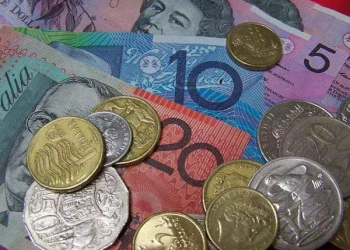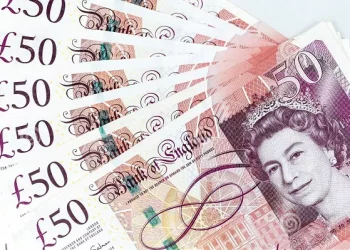Exchanging currencies efficiently is crucial when traveling, conducting business, or making financial transactions in a foreign country. For individuals looking to convert euros (EUR) to pesos (MXN for Mexico or PHP for the Philippines), understanding the best exchange options and strategies can help maximize value and minimize losses due to unfavorable exchange rates or high fees. This guide will explore the most effective ways to exchange euros for pesos, compare different exchange services, and provide tips to get the best possible rates.
Understanding the Exchange Rate: EUR to Peso
Before exchanging euros for pesos, it is essential to understand the exchange rate. The exchange rate represents how much one euro is worth in pesos. Rates fluctuate due to several factors, including:
- Supply and demand in the forex market
- Economic indicators and monetary policies
- Inflation and interest rates
- Political and economic stability
To check the latest exchange rate, consider using financial websites like XE, OANDA, or Google’s currency converter. Additionally, bank websites and forex trading platforms provide real-time exchange rates.
Where to Exchange Euro to Peso
There are multiple places where you can exchange euros for pesos. Each option comes with its advantages and disadvantages in terms of cost, convenience, and accessibility.
1. Banks and Financial Institutions
Most banks offer currency exchange services for their customers. If you have a European bank account, you may be able to exchange your euros for pesos at a partner bank in Mexico or the Philippines.
Pros:
- Secure and reliable
- Competitive exchange rates (especially for account holders)
- No risk of counterfeit currency
Cons:
- Limited operating hours
- Some banks charge service fees
- May require a bank account or documentation
2. Currency Exchange Offices (Bureau de Change)
Currency exchange offices are common in airports, shopping centers, and tourist areas.
Pros:
- Convenient locations
- No need for a bank account
- Fast transactions
Cons:
- Exchange rates may be less favorable compared to banks
- Some offices charge high commission fees
- Not all offices are regulated
3. Airport Currency Exchange Counters
Airports have currency exchange counters, allowing travelers to exchange money upon arrival.
Pros:
- Immediate access to local currency
- Located at international arrival terminals
Cons:
- Worst exchange rates compared to banks and ATMs
- High service fees and commissions
4. ATMs (Automated Teller Machines)
Using an ATM to withdraw pesos directly from a euro-based account is one of the most efficient options.
Pros:
- Competitive exchange rates
- Convenient and widely available
- Secure transactions
Cons:
- International withdrawal fees may apply
- Some ATMs limit the withdrawal amount
- Risk of card skimming in unsafe areas
5. Online Forex Platforms & Money Transfer Services
If you are transferring large amounts or exchanging money for investment purposes, forex trading platforms like Revolut, Wise (formerly TransferWise), or PayPal offer competitive exchange rates with lower fees than traditional banks.
Pros:
- Best exchange rates for international transfers
- Digital transactions reduce the need for physical cash
- User-friendly mobile apps
Cons:
- Requires an online account and verification
- Transfers may take time depending on the service
- Some services have transfer limits
6. Hotels & Resorts
Hotels and resorts often offer currency exchange services for their guests.
Pros:
- Convenient if staying in a hotel
- No need to search for a currency exchange office
Cons:
- Exchange rates are generally poor
- Service fees can be high
Tips to Get the Best Exchange Rate
To ensure you get the best value when exchanging euros for pesos, follow these expert tips:
1. Monitor Exchange Rates in Advance
Exchange rates fluctuate daily. Monitoring rates over time can help you exchange money at the most favorable rate.
2. Compare Exchange Rates Across Different Providers
Banks, ATMs, and exchange offices offer different rates. Compare rates online before making a decision.
3. Avoid Airport and Hotel Exchanges
These locations usually have the worst exchange rates. Instead, use ATMs or reputable money transfer services.
4. Use ATMs with Low or No International Fees
Some European banks have partnerships with banks in Mexico or the Philippines, allowing fee-free withdrawals.
5. Exchange Larger Amounts When Possible
Many exchange services offer better rates for larger transactions. However, avoid carrying too much cash for security reasons.
6. Use Online Banking for International Transfers
Services like Wise or Revolut offer real exchange rates with low fees, making them ideal for larger transfers.
7. Watch Out for Hidden Fees
Some exchange services advertise “zero commission” but compensate with poor exchange rates. Always check the final amount you’ll receive.
8. Beware of Dynamic Currency Conversion (DCC)
When using your debit or credit card abroad, you may be offered the option to pay in euros instead of pesos. Always choose to pay in pesos to avoid poor exchange rates.
Conclusion
Exchanging euros to pesos efficiently requires careful consideration of exchange rates, fees, and convenience. Banks, ATMs, and online transfer services generally offer the best rates, while airport kiosks and hotel exchanges tend to be costly. By following best practices—such as monitoring exchange rates, avoiding high-fee services, and using online platforms—you can get the most value for your money.
Whether you’re traveling, investing, or sending money abroad, choosing the right exchange method can make a significant financial difference. Take the time to research and plan ahead to ensure a smooth and cost-effective currency exchange experience.
Related Topics:



























